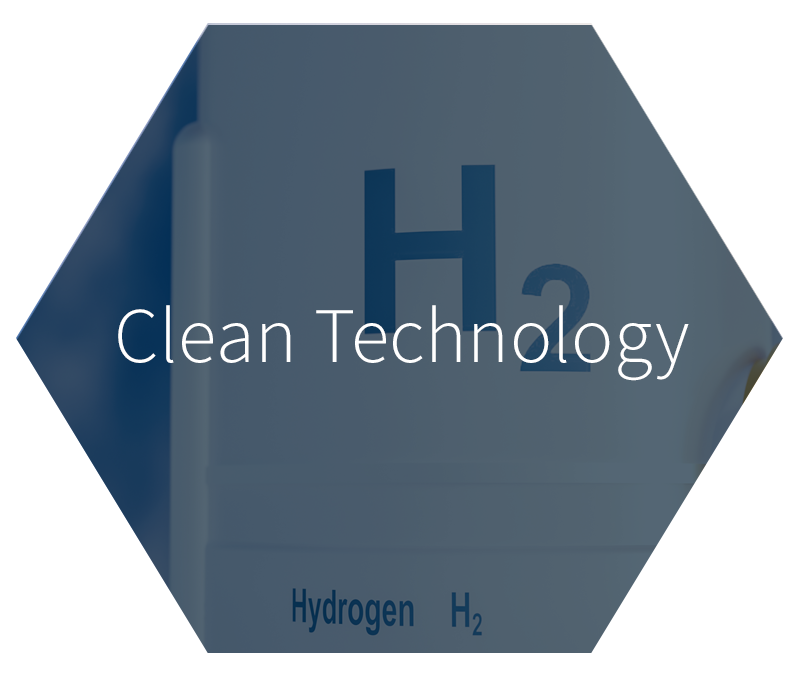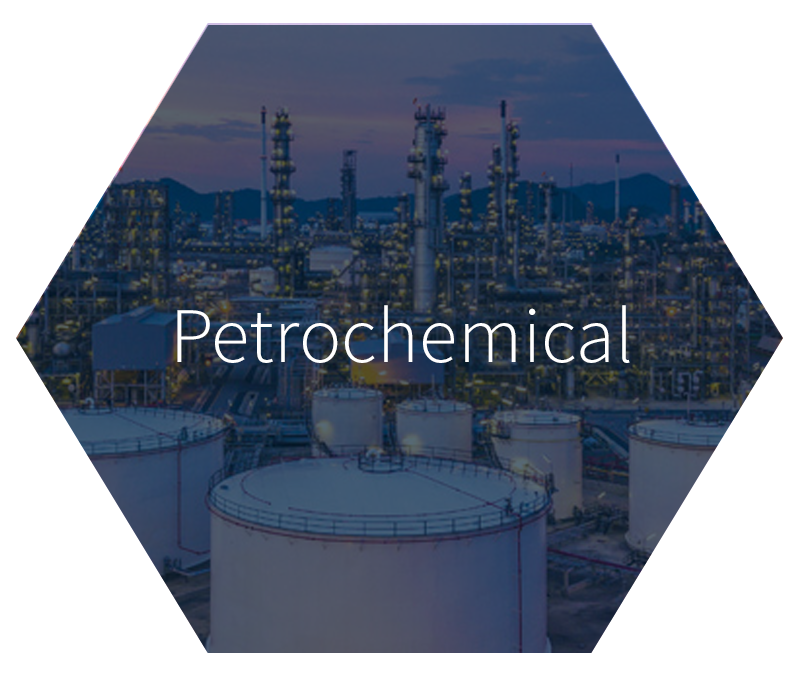New Clean Energy Strategy Galvanises Leading Coatings Firm
Diffusion Alloys is a leading global coatings business, with over 60 year’s experience in applying specialist technology to protect against metal degradation across industrial processes. Now following a new strategy in the clean energy market, specifically focused on blue and green hydrogen, energy storage, and nuclear, MD Lisa Randall tells Energy Focus more about opportunities and successes to date.
As part of the global energy transition, it is widely accepted that hydrogen (the most abundant element on earth) holds the key to long-term success. But hydrogen, despite its chemical simplicity, is difficult to store and requires modern processes to treat, allowing for the transformation to a useful tool. Depending on the material input, hydrogen is also questioned over its long-term sustainability credentials with CO2 output a part of the process.
Large scale hydrogen production is broadly categorised as blue or green. Blue hydrogen uses natural gas, usually methane, as an input before splitting to form carbon and hydrogen. The carbon that would typically be emitted is captured and stored and the Hydrogen is sent to storage before being compressed and pumped to pipelines. Green hydrogen follows a similar process but uses renewable energy (solar and wind) as the input, powering an electrolyser to produce hydrogen and oxygen from water, before storing the hydrogen and venting the oxygen with no negative environmental impact.
The processes and components used in both methods are complicated and require significant investment for equipment and commissioning, but the opportunities are large and the stakes are high.
However, when industry players successfully hurdle the initial cost barriers, the next stage is managing the process and protecting components. This requires meticulous planning to understand and navigate intense heat, corrosion challenges, and detailed engineering processes.
Electrolysers, fuel cells, oxidation facilities, storage equipment, and a range of associated components – mostly high value and large in size – must be protected as the clean tech industry advances.
“We are coming into a very significant period of growth,” smiles Lisa Randall, MD at Diffusion Alloys.
Her business, based in Middlesbrough in the UK’s northeast, is an industry leader when it comes to application of a range of protective coatings against metal degradation. Historically, Diffusion Alloys has been a key player in the energy industry, mainly focused on turbomachinery components for the gas turbine market, as well as coating components for the oil and gas and process industries.
But in 2012, a new owner took control of Diffusion Alloys, immediately seeing the potential of the assets and knowledge, and the opportunities within the energy transition. An investment business purchased the company from its previous owner and Randall was part of the team to take the reins. After learning the industry and building lasting the relationships, a new strategy was put in place to take Diffusion Alloys in a new direction.
RE-STRATEGY
“We completed a total re-strategy of the company around two years ago and we exited a sizeable portion of our business which was no longer core,” she tells Energy Focus.
Seeing the potential and obvious onset of hydrogen as an alternative to fossil fuels in industrial power generation, Randall set about preparing Diffusion Alloys for work in the clean-tech space, especially renewable energy where many existing customers were applying their innovation.
“The strategic refocus of the business was us understanding that there is an opportunity for our coating technology within clean technologies, particularly low-carbon high volume hydrogen production and the solid oxide fuel cell and electrolyser industry where our systems operate at high temperature” she says.
Simply, metal equipment and components must have protection if they are to function at the desired level for any sustained period of time. Assuring extension of critical systems drives down lifetime capital costs and lowers the total cost of output.
“Our coating technology is niche,” states Randall. “There is a whole world of coatings out there but what is specific about us is that our coatings provide stable, long-term protection in corrosive atmospheres. It’s a specialised coating, formed through a chemical reaction. There is no bond or adhesion; a new intermetallic structure is formed at the surface of the material, which continuously replenishes the stable oxide formed in service. We provide aluminides, chromides or borides tailored to the corrosion mechanism.
Diffusion Alloys works across a wide range of steels and nickel based alloys and is able to provide superior protection for large components that others cannot.
“Our aluminide coatings are particularly prevalent in process industries where you have catastrophic corrosion mechanisms such as metal dusting, carburisation, sulfidation, oxidation and coking, typically between 500 and 900 degrees Celsius, where the stable oxide forms a resilient barrier Over the last decade, our coatings have found application in solid oxide fuel cell and electrolyser systems where the coating prevents the outward permeation of chromium and thus prevents poisoning of the stack”
QUALITY BASED
Assuring the best configuration and attributes for the coating deliver the best performance. This is the reason the company likes to become an extension of its customers business, creating a long-lasting, symbiotic relationship.
“We come into the frame when a customer is at the development stage – particularly in clean-tech – where designs can be fluid and challenges are still being addressed,” Randall explains. “We go through from early-stage development all the way through to commercialisation. We influence and we are in dialogue about how the coating can best serve their needs. We become integral and continue to provide technical support through to commercial production. That means we ultimately can provide the quality the client needs.”
According to the International Energy Agency (IEA), clean hydrogen is currently experiencing political and business momentum with multiple global projects scaling technology to drive cost down. Transport, buildings, and power generation are areas where hydrogen remain absent, and where many see major prospects.
“We looked closely at blue hydrogen, green hydrogen, energy storage, and nuclear. These industries have different challenges but they are certainly coming very quickly,” details Randall. After exciting the gas turbine market, a portion of the business described as ‘low value add’, a new growth phase was started. New employees are coming on board and Randall expects the business to double staff count and turnover in the next 12-24 months.
“We relocated all our facilities to an existing site we had in Middlesbrough, and we made this our centre of excellence. Since then, we’ve been developing our coatings and processing technologies to take advantage of what is going to be a phenomenal ramp up in demand of blue and green hydrogen.”
In Middlesbrough, part of an industrial decarbonisation cluster project where energy intensive businesses hope to benefit from large scale blue hydrogen and green hydrogen produced as a result of offshore North Sea activity, Diffusion Alloys boasts the widest range of applications for aluminising of any company in the market.
Blue hydrogen, made using Steam Methane Reforming (SMR) or Auto Thermal Reforming (ATR) where carbon is captured and stored to mitigate climate impact, is expected to play a key role in the UK’s energy transition for the next two or three decades whilst green hydrogen as there is not enough capacity for green hydrogen to reach the required levels.
“The components for blue hydrogen production are typically large and require a very large furnace. We can accommodate tubes up to 18.5m in length and components up to 3.5m in diameter. We have a good view of what is coming in that market because we are close to our customers, to ensure that our part of the supply chain is ready for a significant ramp up,” says Randall.
PARTNERSHIP SUCCESS
In June 2023, Diffusion Alloys and Johnson Matthey announced a strategic partnership to facilitate the scale-up production in blue hydrogen. Johnson Matthey labelled Diffusion Alloys ‘the best in the world at what they do’ and the company’s tech has also been chosen for major projects that are being rolled out right now. In the short term, Diffusion Alloys has sufficient capacity onsite, but it is considering expansion as opportunities build.
“We have three phases for development,” reveals Randall. “The ramp up we expect to see will not be smooth, but we will manage the first two phases with our existing footprint in Middlesbrough. In the next couple of years, we expect to be reviewing how best to deliver capacity well in excess of our current maximum. We will be reviewing in the context of the ramp up of the global supply chain and significant capital investment is likely.”
The company has a range of coating furnaces, from laboratory to medium sized production and up to its largest at 21m in length, one of the largest in the world. This, combined with extensive experience and long-standing relationships, is what propels Diffusion Alloys to the industry’s forefront.
“We are unique with our scale, we have experience and assets, and we have built up an incredible level of expertise in processing knowhow,” states Randall. “In smaller components for green hydrogen – solid oxide technologies for fuel cells and oxidisers – we have considerable level of expertise in coating intricate components. We are talking about complex internal geometries where high-quality coating must extend to all internal areas and then be verified. That is difficult and requires a fusion of engineering and technical skill that we do well.”
First mover advantage in this industry is important, and taking steps to truly understand what is required from new technologies is what allows companies to tailor their package, becoming unique and not a one size fits all offering. Few other coatings businesses in Europe have the experience and knowledge present with Diffusion Alloys, and none have the assets and relationships. As the company learns more about its new markets, Diffusion Alloys will work alongside its clients to further entrench itself in the energy markets that are so important in the transition.
Randall, a mechanical engineer and finance industry expert, is embracing the task.
“It has been a challenge. Prior to the change of ownership, the company had been under invested in,” she says. “It needed a lot of work, but the base technology was very sound. The question for us was about whether we could take it into new markets. After embarking of the diversification strategy, it became clear that there were significant opportunities for our coatings in new technologies. A few years later, we are actively engaged in solid oxide technology, energy storage, nuclear and large-scale blue hydrogen. The development pathway and deployment timeline for each of these industries is distinct but the opportunity within each is huge. We will be ready to provide the coating processing capacity required for large scale blue hydrogen and we will be able to provide the bespoke coating processing capabilities essential to support the ramp up in green hydrogen production.
The reason for the success of the new strategy is that Diffusion Alloys coatings do the job. The company has references all over the world for a quality of coating that significantly extends life of metal components.
A recent case study saw burner plates used in SMR units, typically with a lifespan of three to five years, have their life expectancy more than doubled thanks to the aluminide diffusion coating applied by Diffusion Alloys. The company has worked with its customer for a decade, applying aluminised coasting to Incoloy 800 plates, and the study found, after metallurgical analysis, minimal degradation of the coating with the burner plates still in good condition after 10 years in service.
With national clean energy targets in place for 2050 across much of the world, and with growing appetite for clean hydrogen production, the market for Diffusion Alloys is wide open. Backed by ambitious and genuine investment, there is no reason this business cannot now thrive as new tech comes to the fore.
Original article can be found here.





